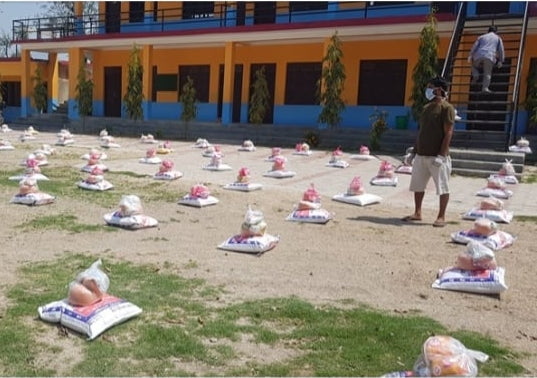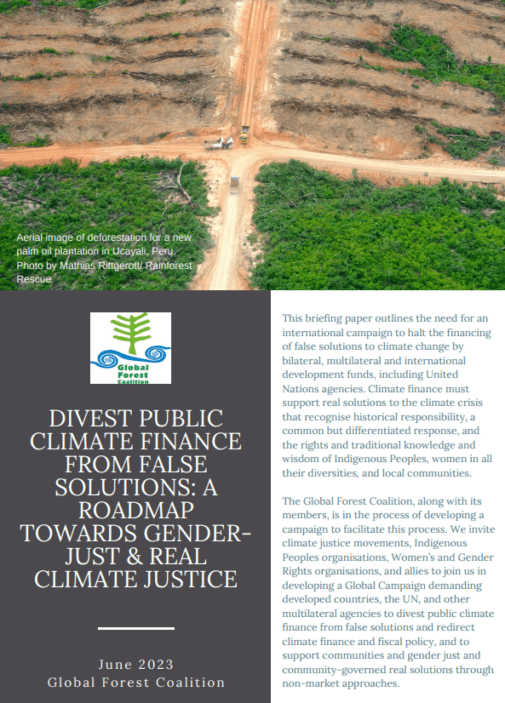Los bosques comunitarios de Nepal en las primeras líneas contra el COVID-19

Por Ramesh Timilsina, Oficial de Programas, Federación de Usuarios Forestales Comunitarios de Nepal (FECOFUN, por sus siglas en inglés)
Nepal, al igual que el resto del mundo, está sufriendo los efectos del COVID-19. Las fábricas están cerradas, los automóviles se encuentran en sus garajes y las redes sociales están inundadas de millones de actualizaciones sobre el virus mortal. Mientras que las carreteras están vacías y el aire está limpio, la mayoría de la población está confinada en casa. Pero incluso en estos momentos tan difíciles, los grupos de usuarios de bosques comunitarios de Nepal están luchando activamente contra la pandemia. Han estado distribuyendo continuamente ayuda a los pobres y necesitados, gestionando los espacios de cuarentena y conservando la biodiversidad local.
continuar leyendo en inglés…
Community forestry is a practice in which the local community manages, protects and utilizes the forest area handed over to it by the government, and around 2.9 million households actively manage 38% of Nepal’s forests. Community forest users have the right to form user groups (called Community Forest User Groups or CFUGs), use forest resources and even decide the price for the sale of surplus forest products. The Forest Act 2019/2076 states that CFUGs should spend 25% of their income on forest management and at least 50% of the remaining amount on strengthening the capacity of forest users, in particular women and the poor. CFUGs therefore equitably distribute forest resources, with subsidized rates for the most vulnerable users, and they have been instrumental in enhancing the livelihoods of poor forest users. They have also come to the rescue whenever natural disasters have threatened livelihoods.
During the fatal earthquake in 2015 for example, Nepal’s CFUGs helped to sustain the livelihoods of affected families by providing relief and employment opportunities. They have come to the rescue again during the current pandemic, which has hit communities hard, especially those dependent on daily wages. Throughout the lockdown, more than NRs. 1.5 million of food items such as rice, pulses, oil and salt have been directly provided to needy users by their CFUGs. More than NRs. 2 million has also been handed over to local governments to strengthen their disaster management funds. On top of this, CFUGs have distributed thousands of health kits, masks, soaps, sanitizers and thermal guns to forest users and health professionals. Over 1300 buildings and offices have also been made available by CFUGs to the general public as quarantine spaces. As COVID-19 continues to spread, these buildings will help many citizens.
Some CFUGs have created a pay-as-you-work model to support poor households, where a family member is paid daily to carry out forest-based work like weeding, thinning and fire line maintenance. For example, Vijay Community Forest in Nawalparasi has recently supported 70 such households that were in dire need of money. Moreover, the lockdown forced thousands of people to walk home as businesses were shut down nationwide. Several CFUGs provided a meal for those returning home on foot, in particular along the Nepal-India border.
Illegal felling of trees and poaching of wildlife has been at an all-time high during the lockdown period but, despite the restrictions, CFUGs have continued to monitor their forests whilst maintaining social distancing and all other safety measures required. Community-level forest patrols have resulted in fewer cases of illegal poaching and felling in community-managed forests than in other forest types in Nepal. Patrolling at major entry points of forests has also curbed the spread of the virus to new localities. In some districts like Nawalparasi, forest users have partnered with police to make biodiversity monitoring more effective. Similarly, community forest users in buffer zones adjacent to protected areas in Nepal have constructed small ponds and water holes so that flagship wildlife species do not face water scarcity during lockdown.
Community forests are the change agents of our country. They play a significant role in biodiversity conservation and disaster management, and will continue to support the livelihoods of poor and vulnerable people in our society. While they are busy doing so, local governments and other stakeholders should acknowledge their contributions and help to build their capacity. In the short-term, local governments can help to improve the management and safety of CFUG quarantine spaces, and help to ensure the safety of forest guards and community forest users who are actively safeguarding local biodiversity.
In the longer-term, local governments can provide support through maintaining an emergency fund in community forests to be used during future disasters. They can also tackle food security issues by encouraging agroforestry practices for smallholder farmers, and there is an immense opportunity to promote the production of Non-Timber Forest Products (NTFPs) such as medicinal plants in community forests.
“Prosperity through forestry” can be realized by prioritizing community forests in upcoming plans, policies and budgets at all levels of government. The only way to repay these frontline contributors is by developing an effective mechanism for collaboration between community forests and local governments, in order to support their common goal of economic prosperity for Nepal’s forest peoples.







